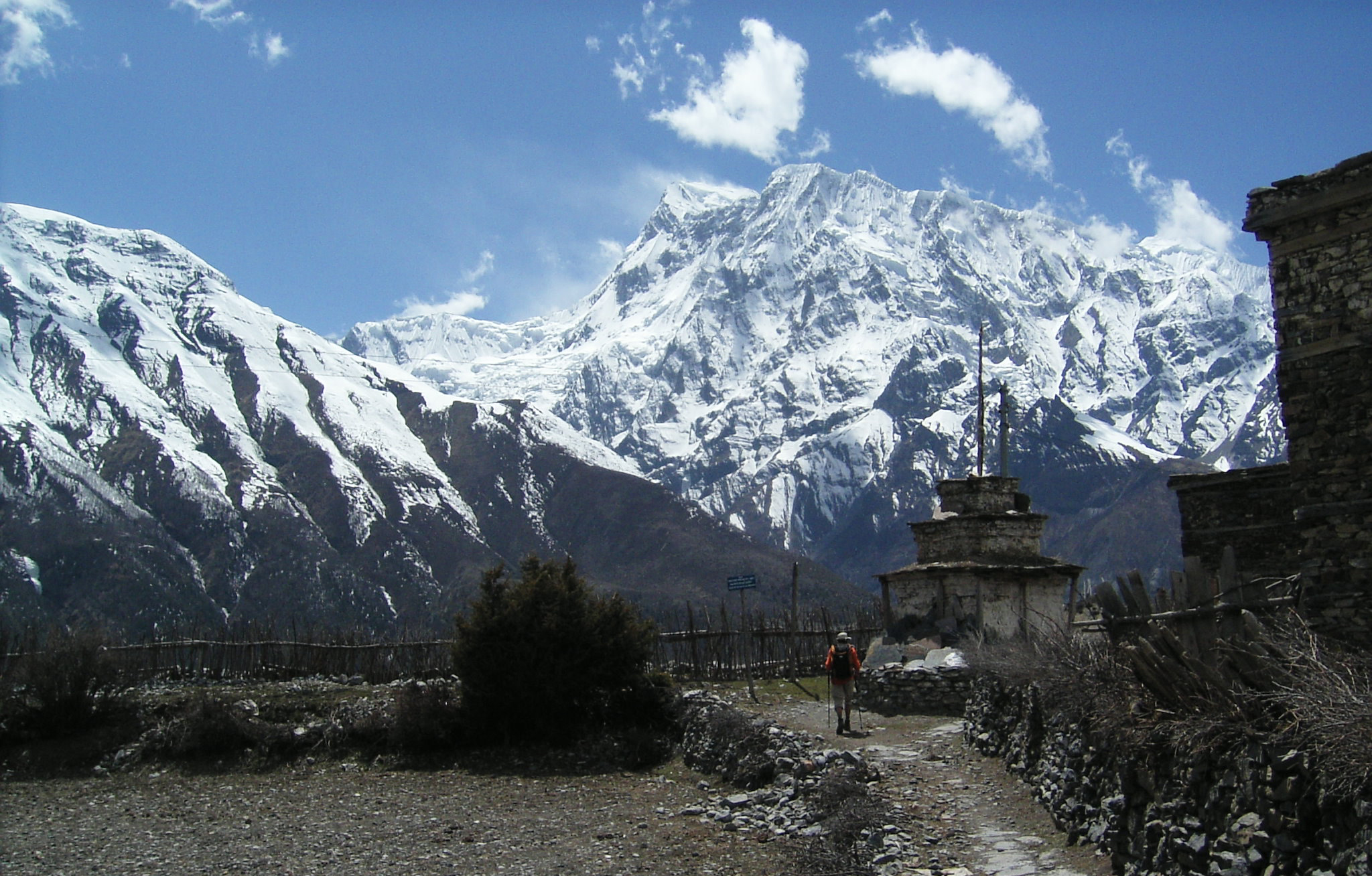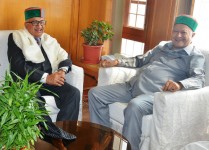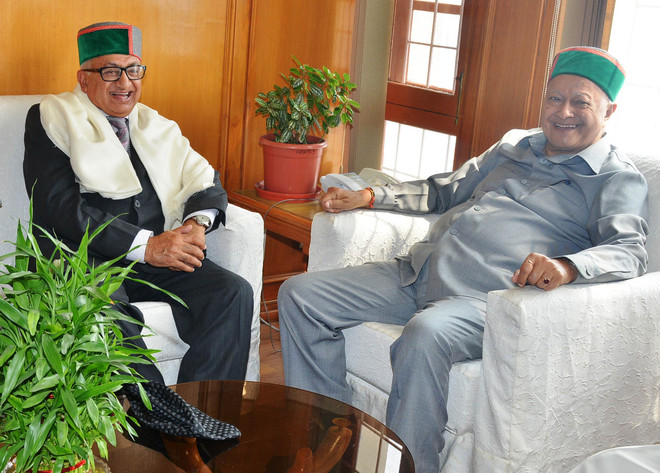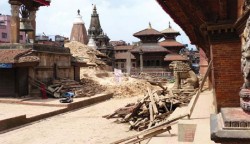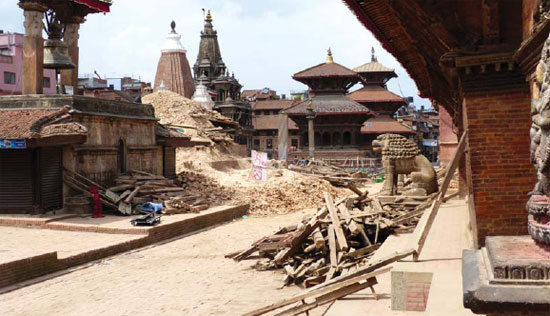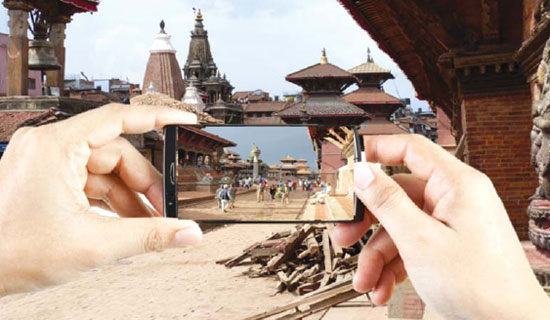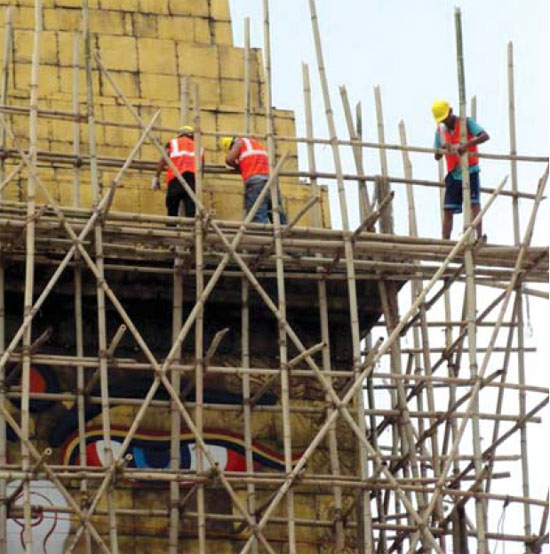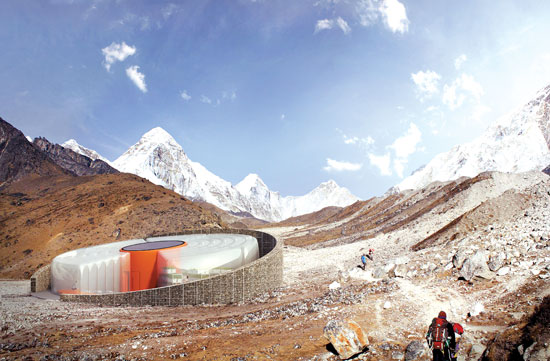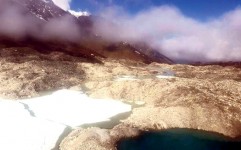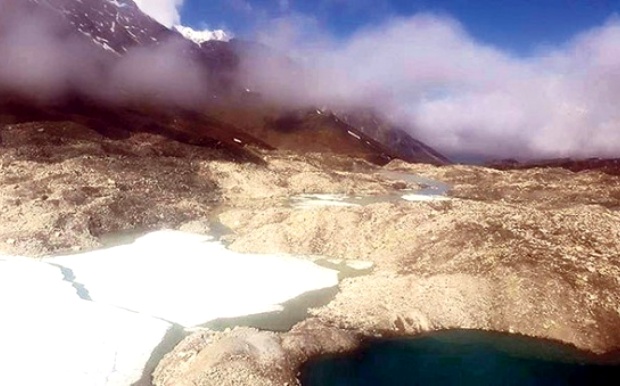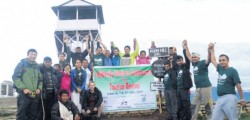
Tourism entrepreneurs of Pokhara have assessed trekking trails in the Annapurna Region and declared them safe to visit.
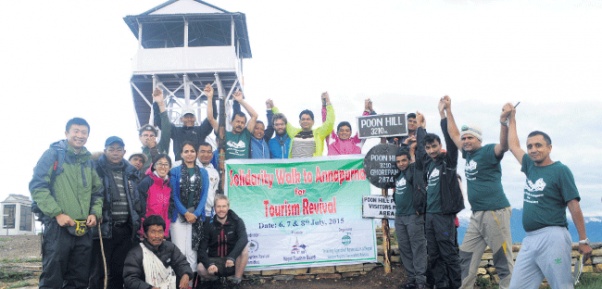
Dipesh Shrestha/Republica Members of the ‘Solidarity Walk to Annapurna for Tourism Revival’ team, tourists and locals join hands at the top of Poon Hill (3,210 m).
Around 40 tourism entrepreneurs from Pokhara completed the popular Ghandruk-Ghorepani Trek this week as part of ‘Solidarity Walk to Annapurna for Tourism Revival’.
Ram Chandra Sharma, president of Trekking Agencies Association of Nepal Western Regional Association (TAAN-WRA), said the solidarity walk was organized to access the condition of trails after the devastating earthquake.
From the top of Poon Hill (3,210 meters), TAAN-WRA declared that trekking trails in Annapurna Region, all highways and airports, business complexes, and hotels, guest house and restaurants are safe. “We are prepared to welcome tourists to Nepal,” added Sharma.
Binaya Acharya, secretary of TAAN-WRA, said all teahouses, hotels and lodges in Annapurna Region have resumed operation.
Tourism entrepreneurs say they trekked in the Annapurna Region because they cannot assure safety of tourists by staying in their offices. “We organized this walk despite the monsoon, because we cannot assure trekkers that they are safe here without making assessment of the route. Foreigners trust us only we provide them factual information,” he said.
Though hotels in Ghandruk-Ghorepani area are almost empty, local hoteliers are hopeful of welcoming trekkers in autumn. Kisam Gurung, president of Tourism Management Committee, Ghandruk said that the visit and assessment of the area by tourism entrepreneurs is a strong proof that the area is safe. “Now, we can confidently say that the area is safe,” he added.
Similarly, Tika Ram Sapkota, media coordinator of PTRC, said the solidarity walk and the dissemination of message that the area is safe will definitely help to bring tourists in the area in autumn. We hope tourists will not cancel their bookings,” he added.
Beatrice Hearne from Indiana (US), who has booked a seven-day Nayapul-Ghorepani-Phedi trek for herself and her husband for autumn, said she was concerned because of lack of factual information. “Now that the area has been declared safe, we are really excited about the trip,” she told Republica in a Facebook chat.
Som Thapa, president of Pokhara Tourism Council, as all trails, bridges, tea houses, hotels and lodges are safe, tourism entrepreneurs can now invite their guests without worrying about anything. “Now we can assure tourists confidently that the area is safe,” he added.
The walk was organized jointly by TAAN-WRA in coordination with PTRC.
Follow and share our more detail from our social media ; Facebook, Pinterest and Twitter.
Source: My Republica
Contact Us:
E-mail: sales@samratnepal





